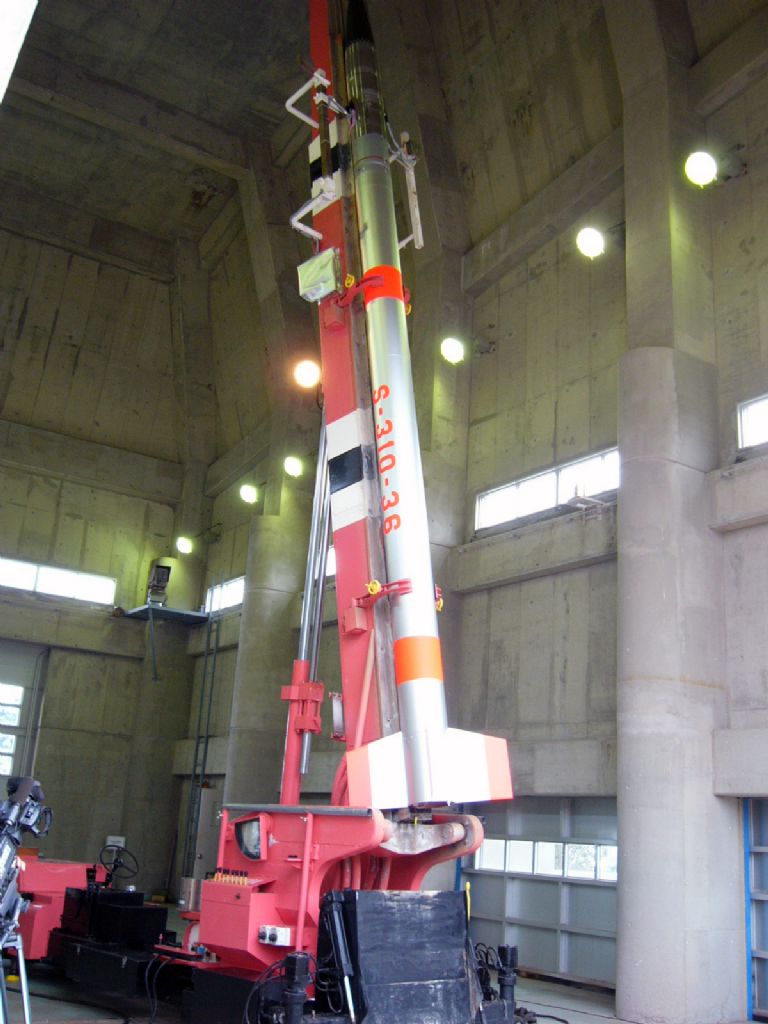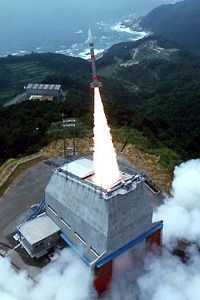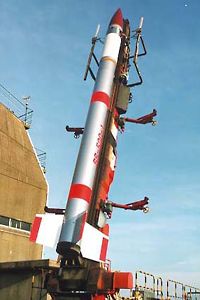About Sounding Rockets

|
The pillar of Japan's space scienceSounding rockets have been developed and launched by ISAS for more than 40 years. They have been dedicated to astrophysical observation, upper atmosphere exploration, space plasma physics, etc., for scientific research. Making use of these flight opportunities, ISAS engineering studies have also been conducted to demonstrate new vehicle systems such as attitude control systems, reentry flight technologies, recovery systems, new avionics, etc., some of which will be employed in the coming satellite launch vehicles and spacecraft. The community of micro-gravity utilization for both material research and life science also uses the sounding rockets. |
|---|
Project Topics
indexSuccessful Launch Experiment, SS-520 No. 5, Followed by Separation of Payload TRICOM-1R and Orbital Insertion

|
Exactly at 2:03 pm (Japan Standard Time) at the JAXA Uchinoura Space Center, JAXA experimented SS-520 No. 5 launch with a microsatellite TRICOM-1R aboard. After liftoff, flight of SS-520 No. 5 proceeded normally. Around 7 minutes 30 seconds into flight, TRICOM-1R separated and was inserted into its target orbit. SS-520 No. 5 launch experiment was the second attempt following the failure of SS-520 No. 4, which occurred in January 2017. Identification of the error and subsequent countermeasures re... |
|---|
Press Release
index-
- Jul. 15, 2025 (14:30) [release]
- The Results of the S-310-46 Sounding Rocket Experiment (Japanese Only)
-
- Jul. 13, 2025 (14:00) [release]
- The Schedule of the S-310-46 Sounding Rocket Experiment [Rescheduled] (Japanese Only)
Characteristics of Sounding Rockets
S-310
|
The S-310 is a single-stage sounding rocket, 310 mm in diameter, and can reach an altitude of 150 km. In case of S-310, it is spun positively in the atmosphere to overcome resonance, and thus avoids continued resonance problems. It also corrects for attitude disturbance by aerodynamic damping. The spin is provided by twisted tail fins which cause 2.8 Hz spin to the body. |

|
|---|
S-520
|
The S-520 is a powerful single-stage rocket which is optionally equipped with three-axis attitude control and a recovery system. It has a capability for launching a 100 kg payload far above 300 km and provides more than 5 minutes for micro-gravity flight environments. |

|
|---|
SS-520
|
The SS-520 is a two-stage rocket, the first stage of which comes from the main booster of the S-520, and has a capability for launching a 140 kg payload to an altitude of about 800 km. |

|
|---|
Major Characteristics
| S-310 | S-520 | SS-520 | |
| Total Length | 7.1m | 8m | 9.65m |
| Diameter | 0.31m | 0.52m | 0.52m |
| Total Weight | 0.7t | 2.1t | 2.6t |
| Summit Altitude | 150km | 300km | 800km |
| Payload | 50kg | 95/150kg | 140kg |
Mission talk by team leaders

|
Project Manager Nobuaki IshiiHere are messages from Project Managers. |
|---|
Pamphlet
- Sounding Rockets
 (1.09MB)
(1.09MB)